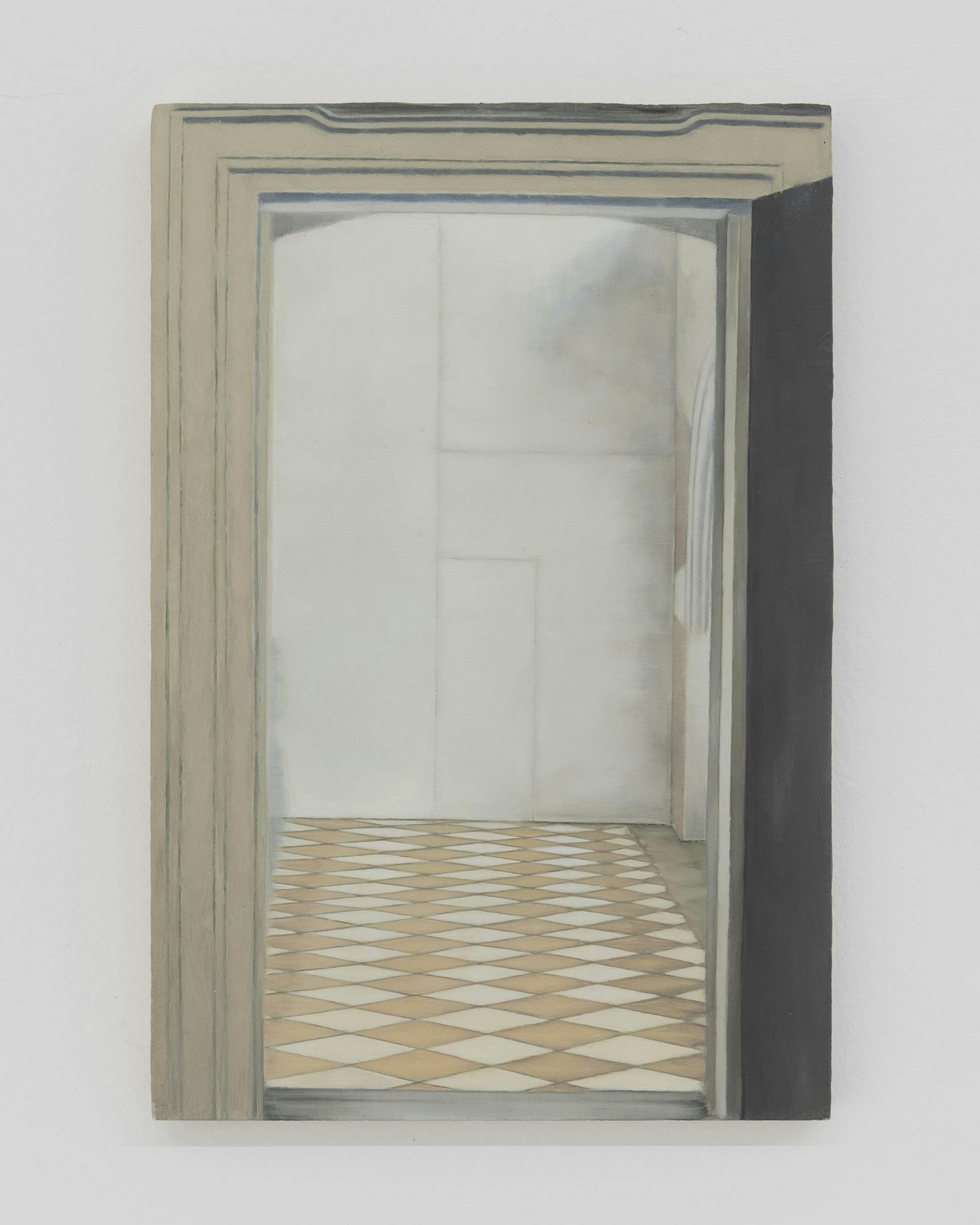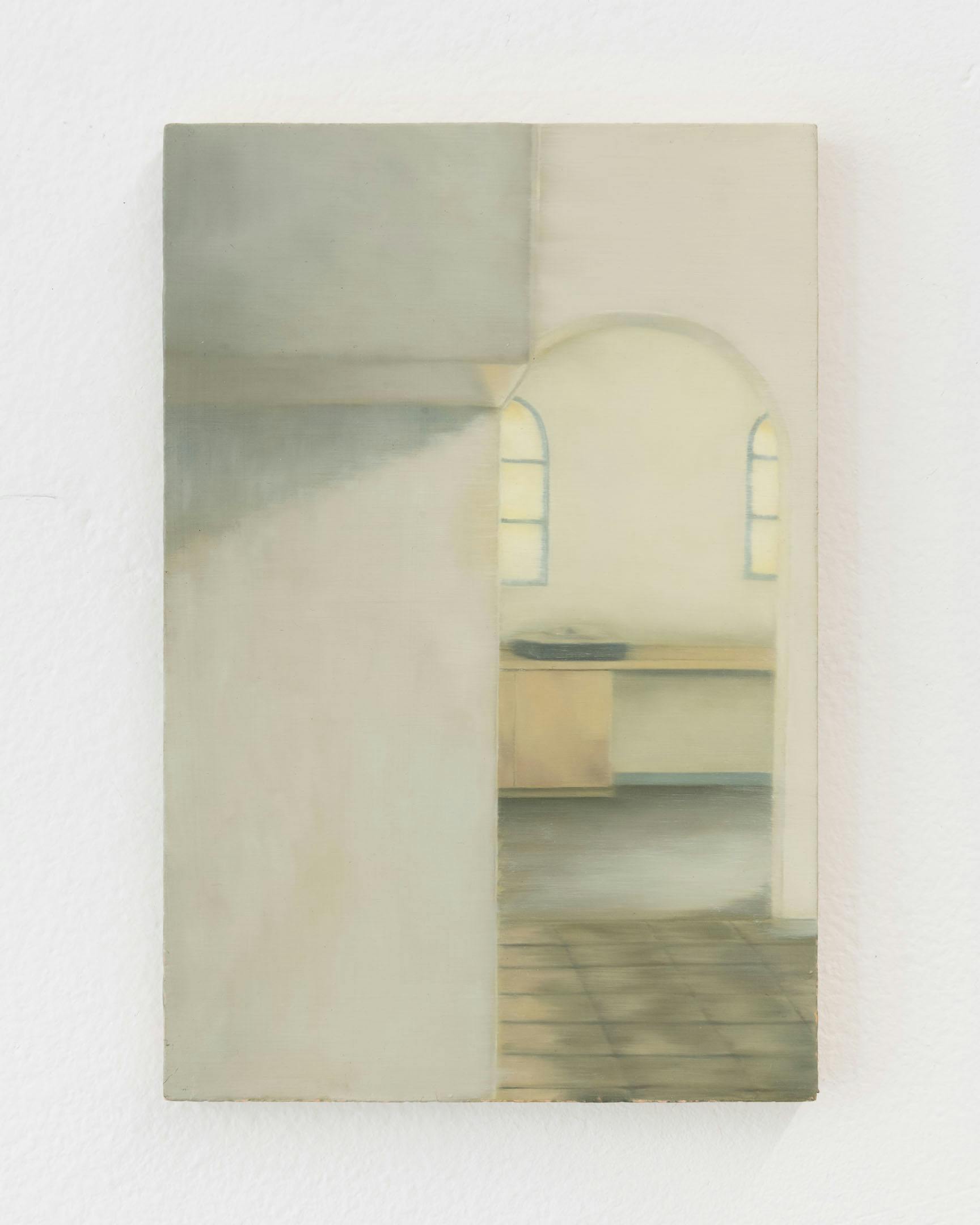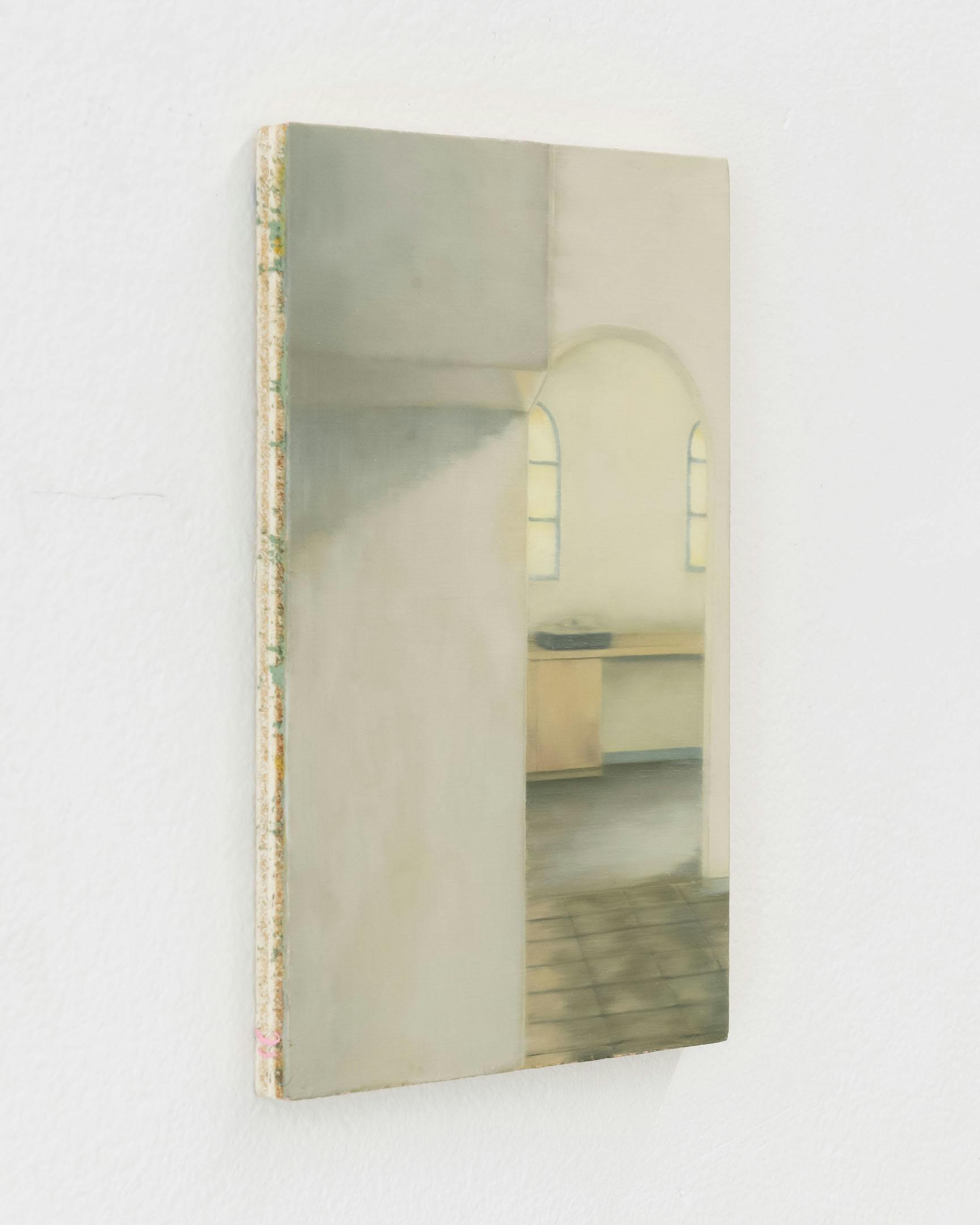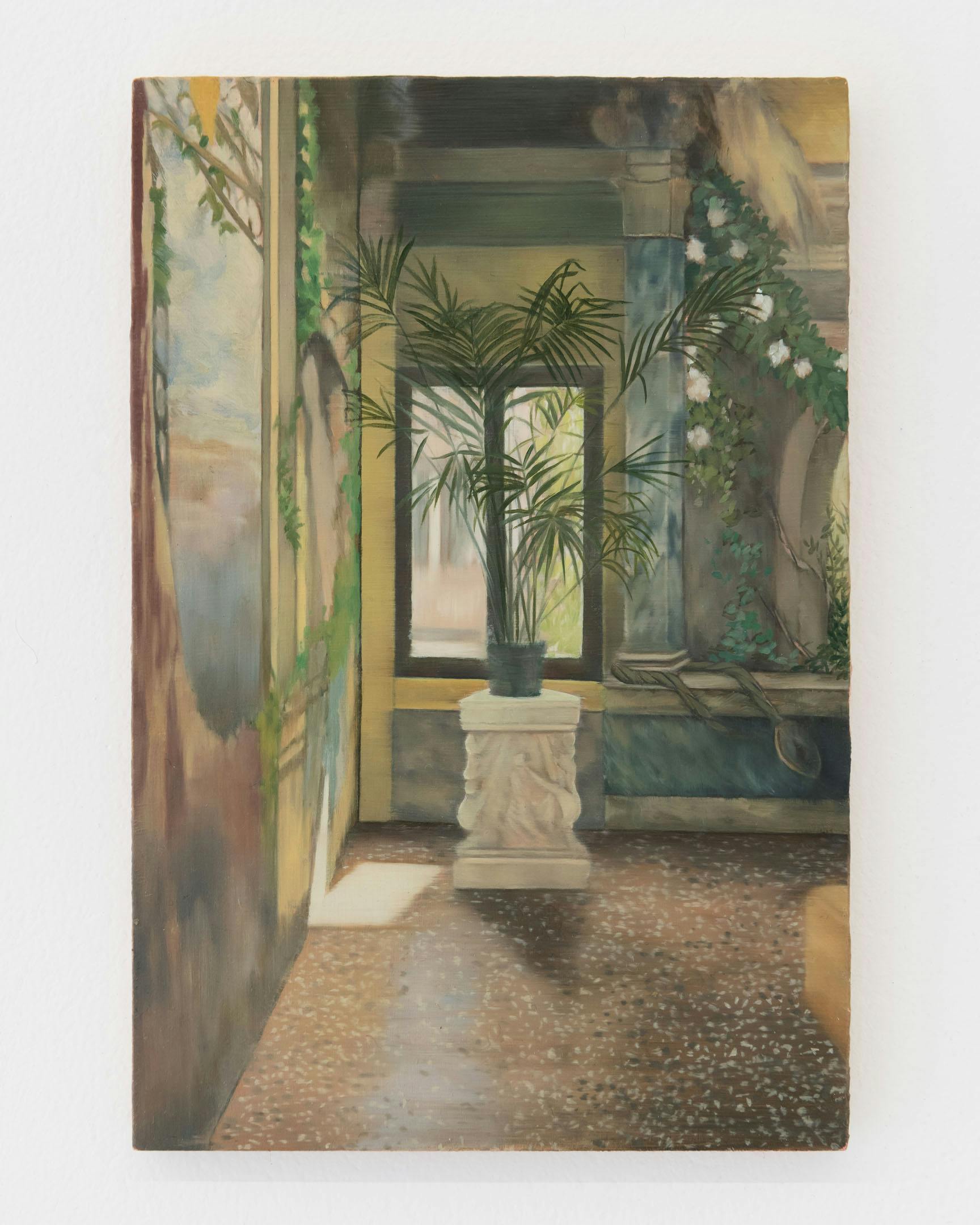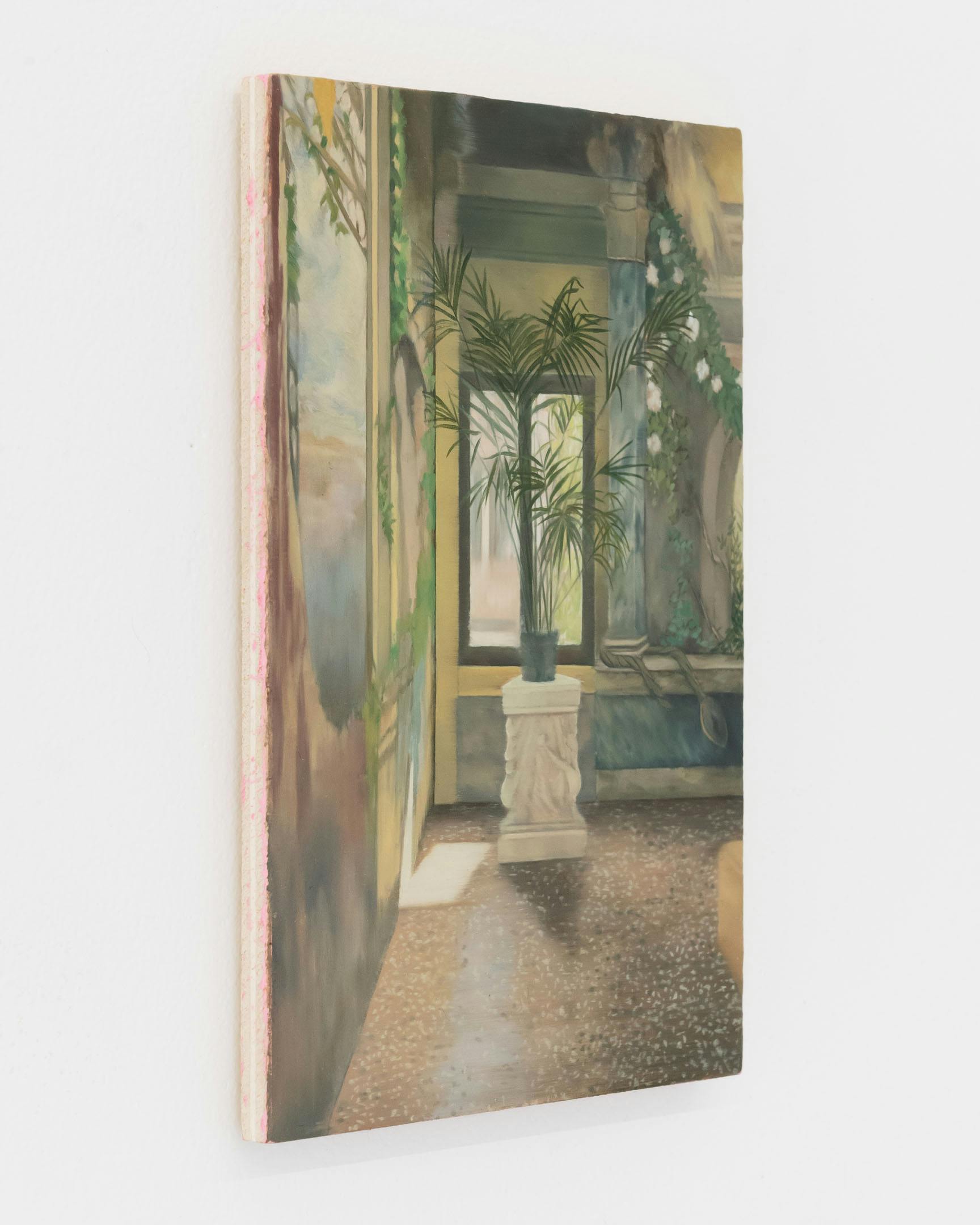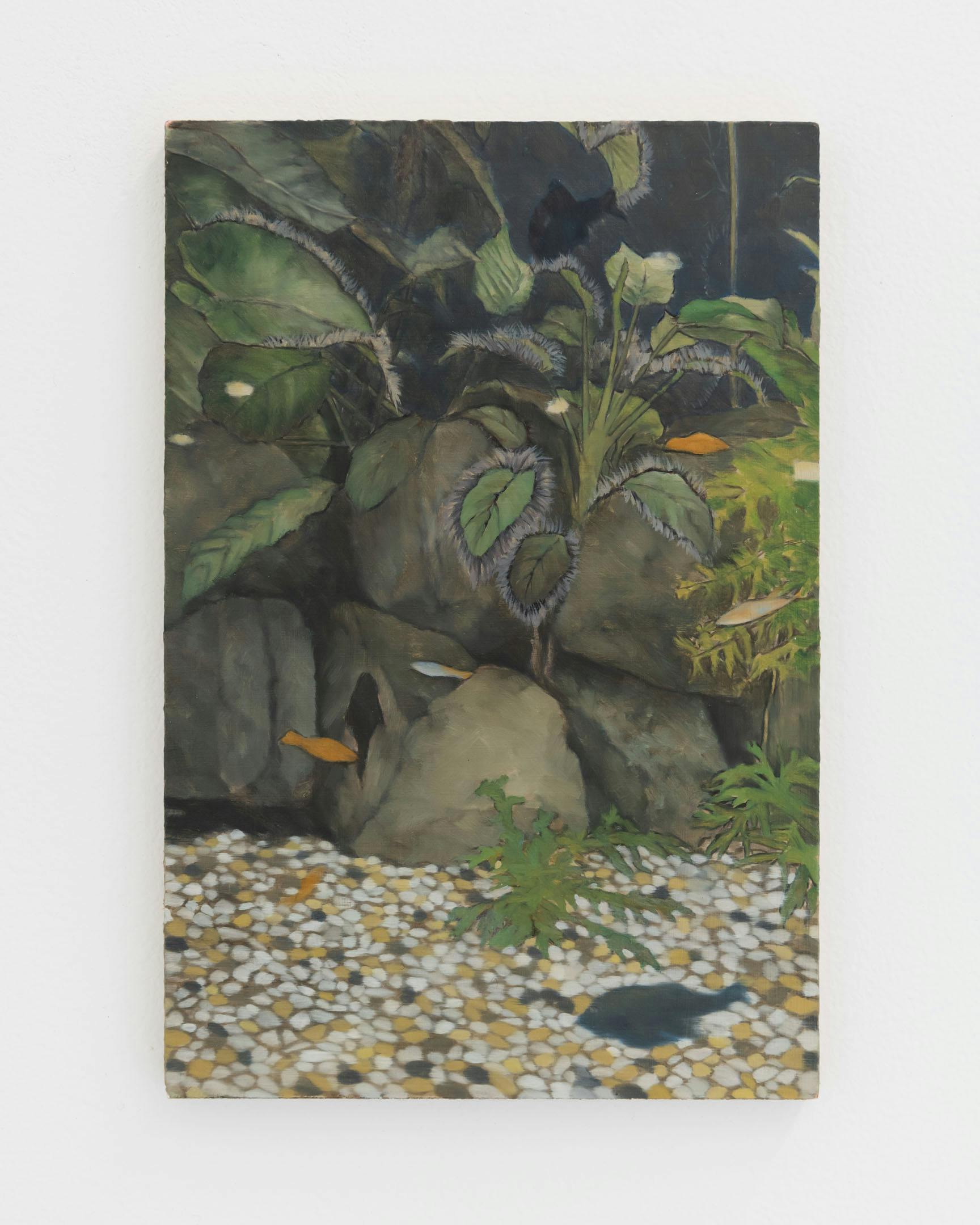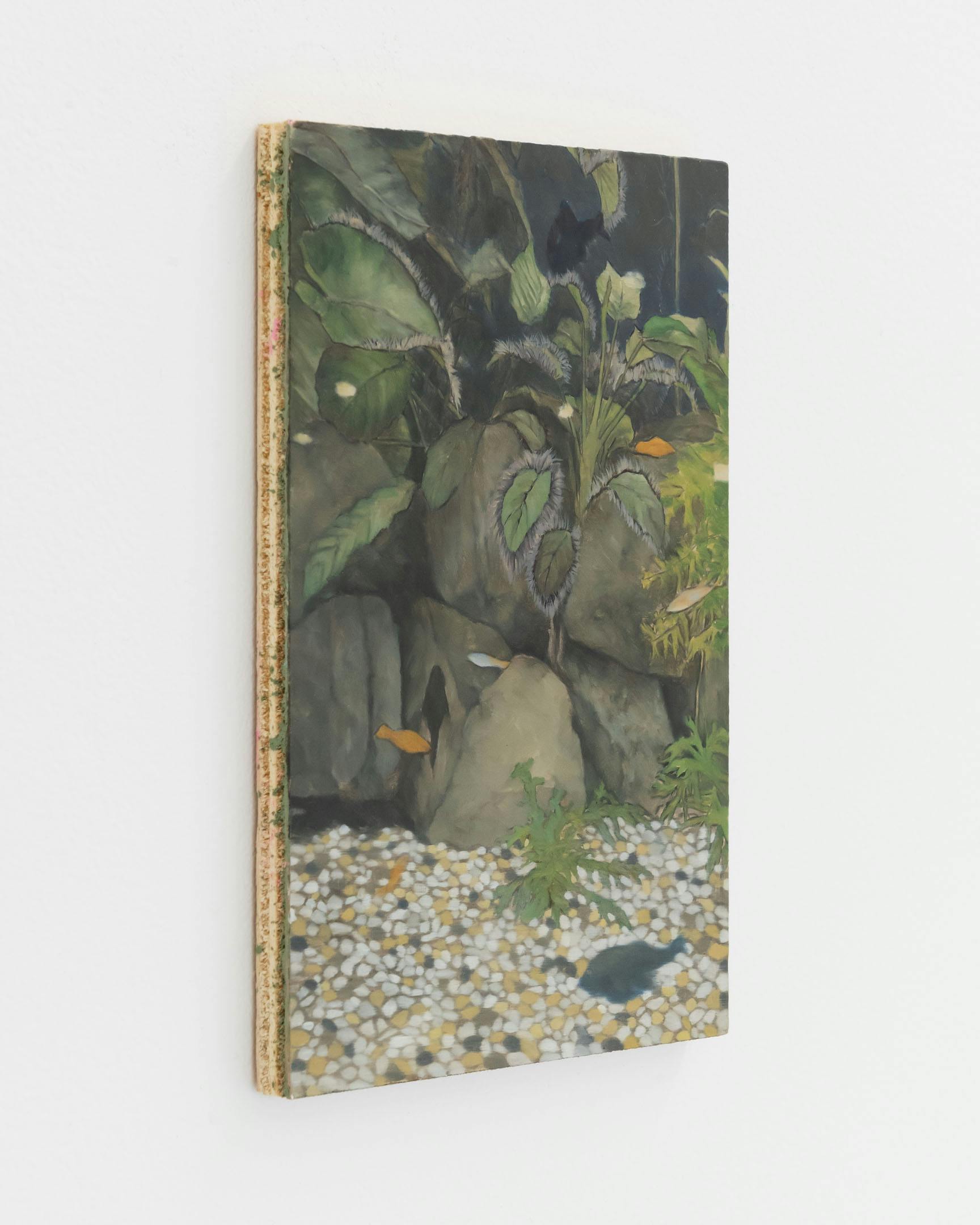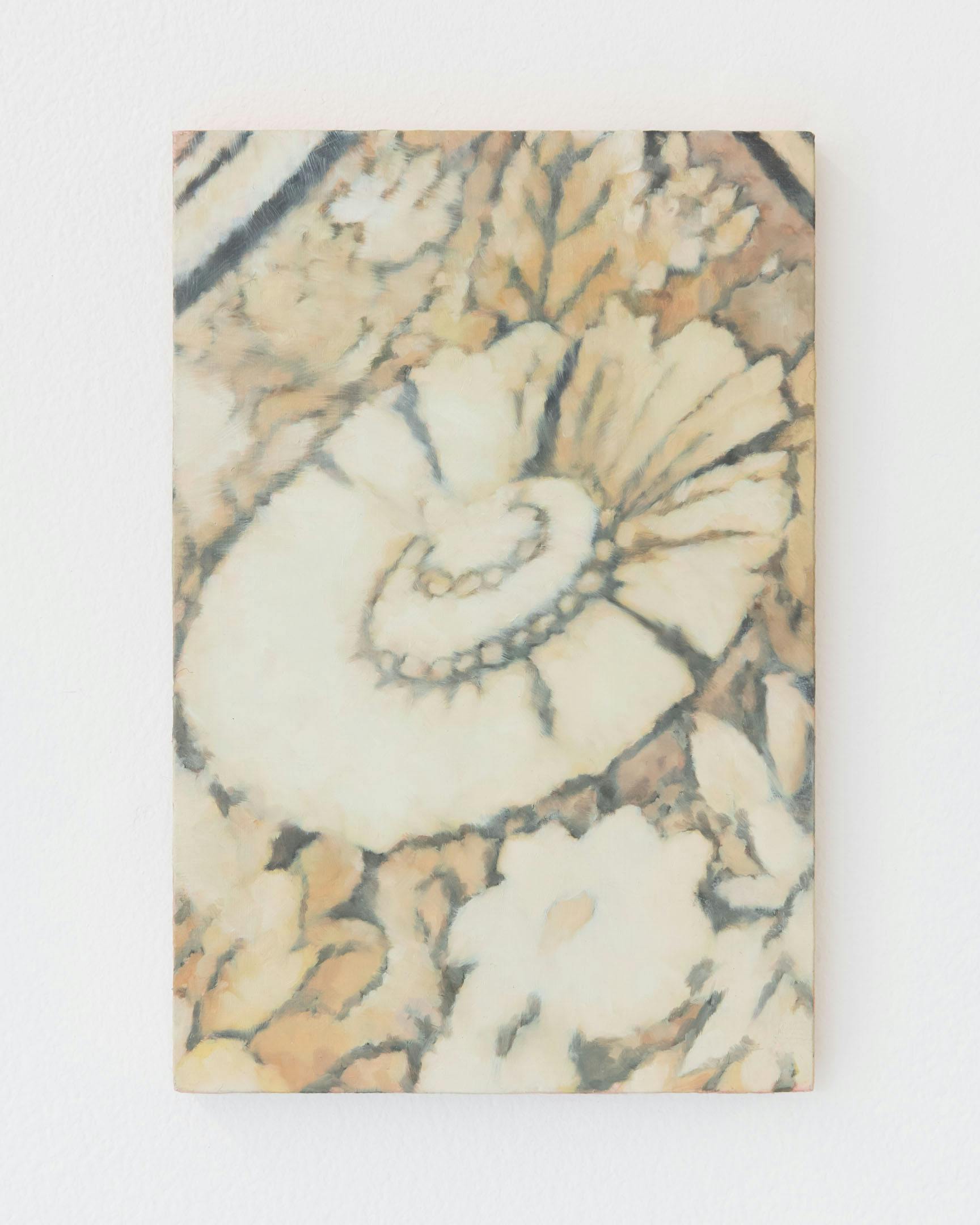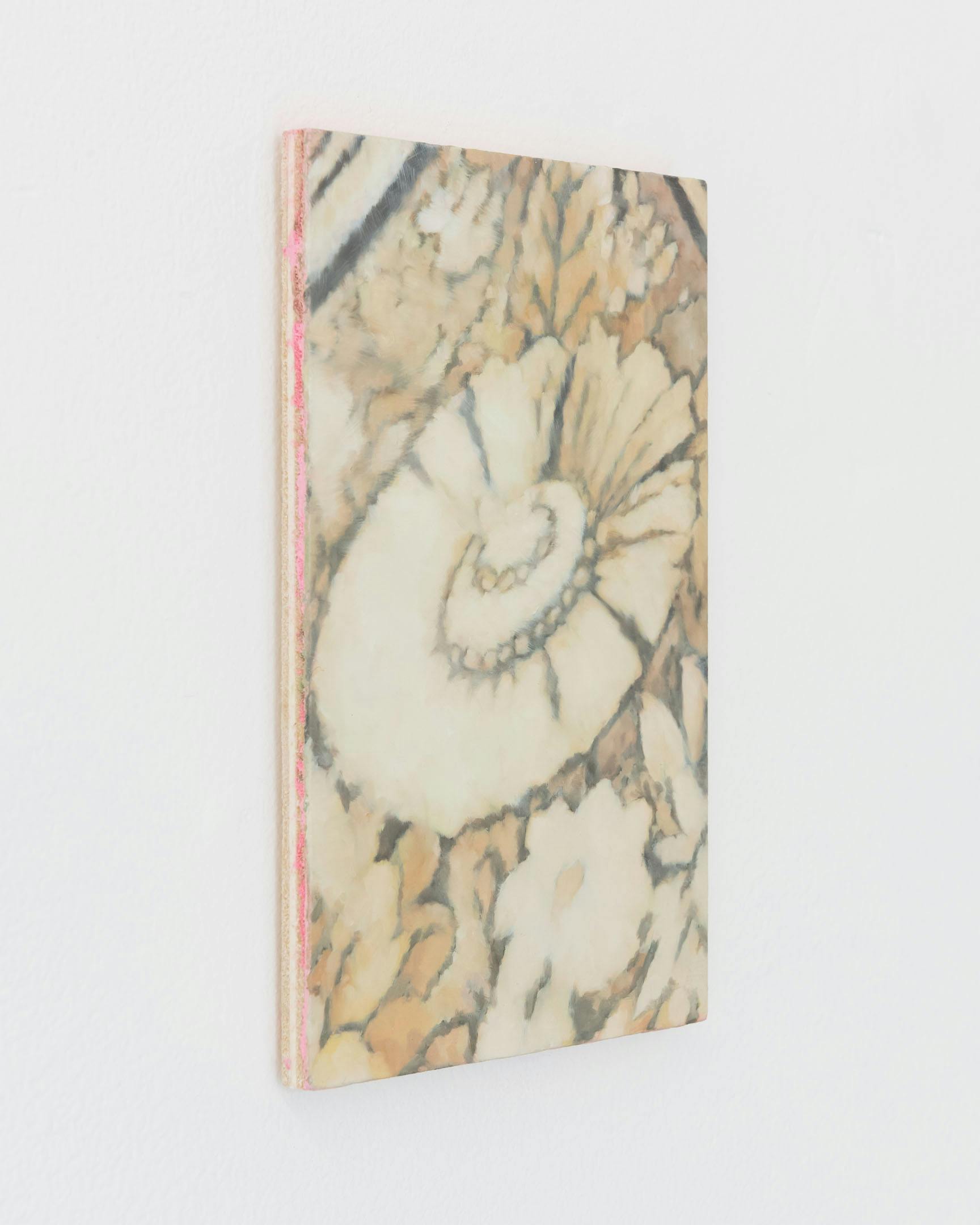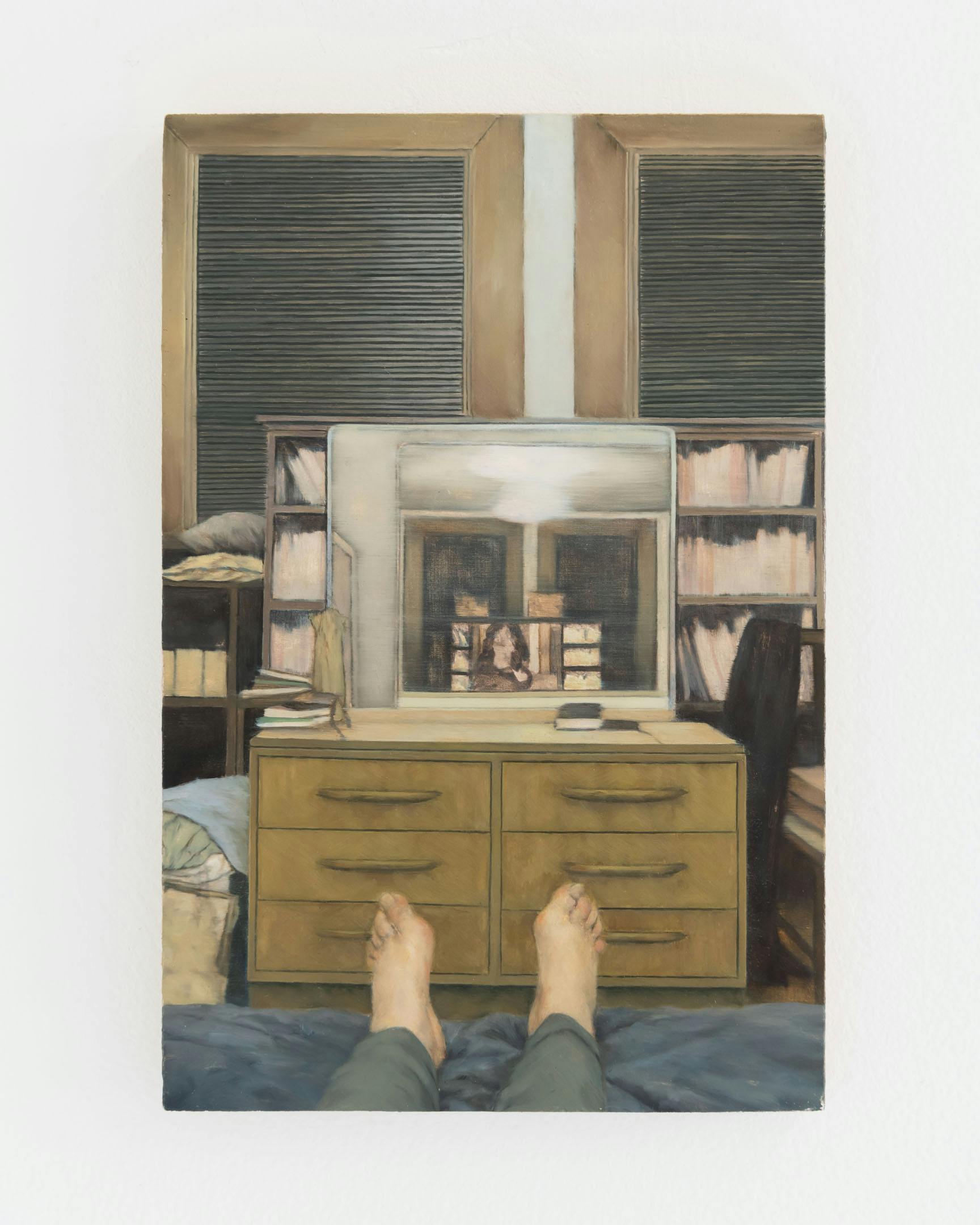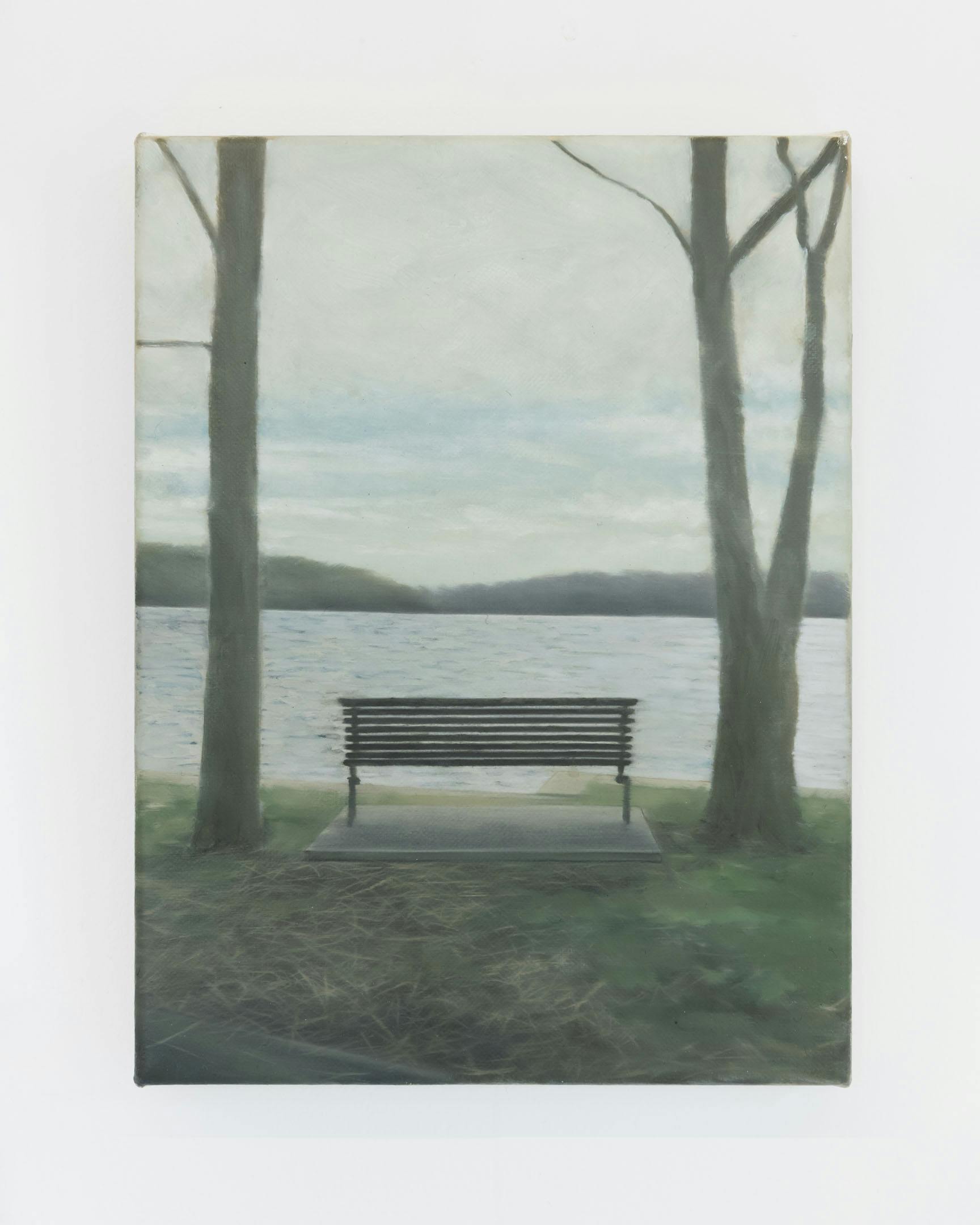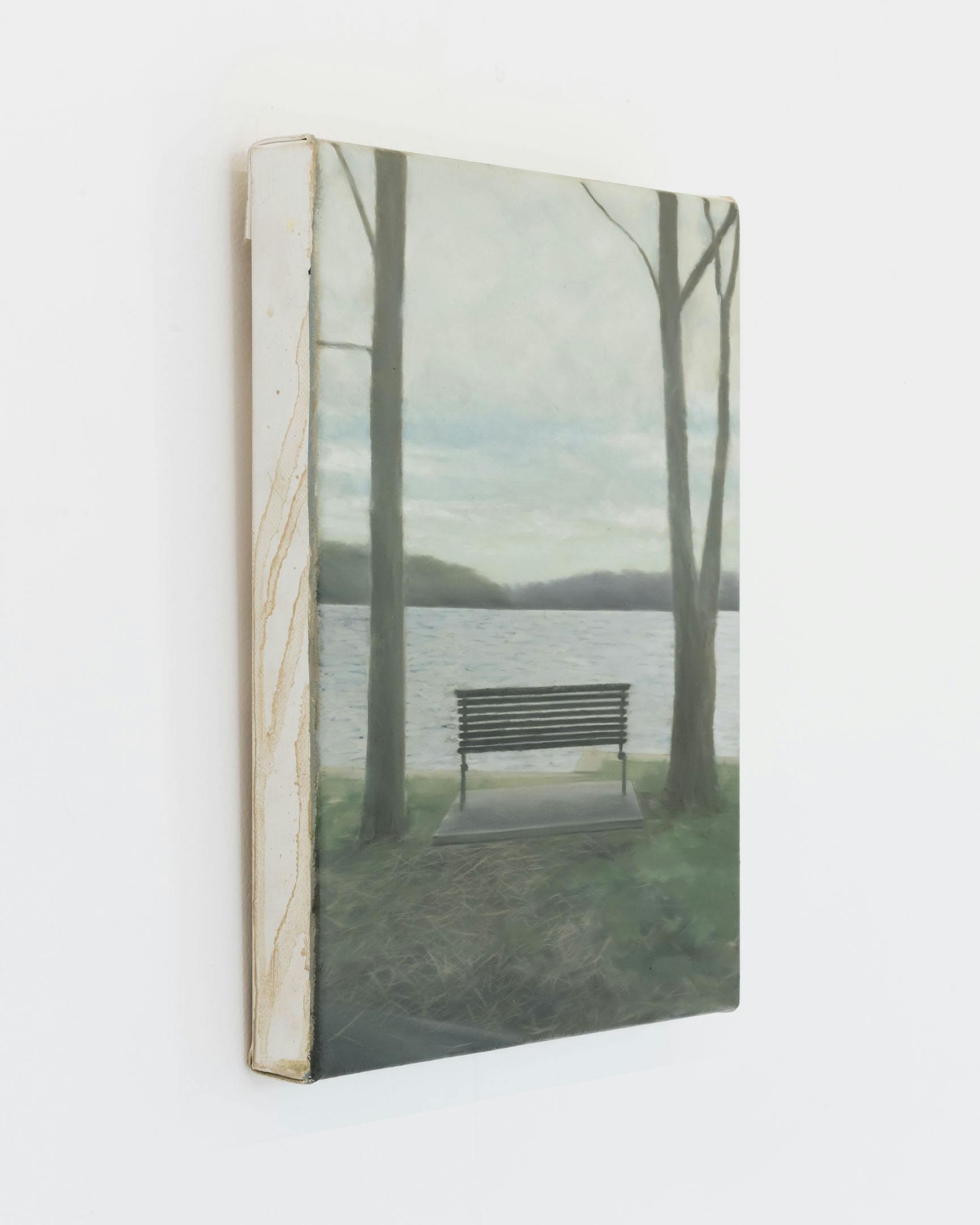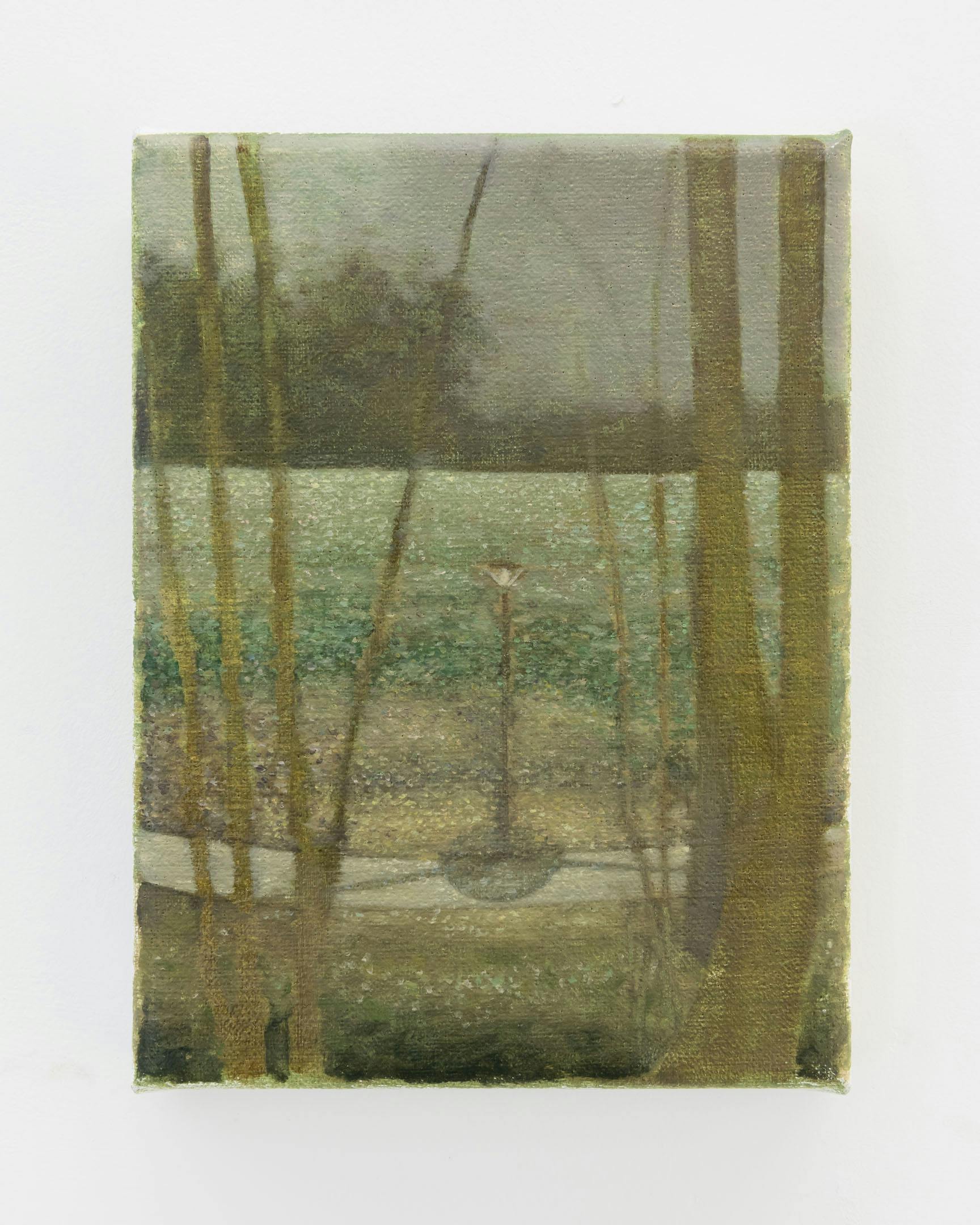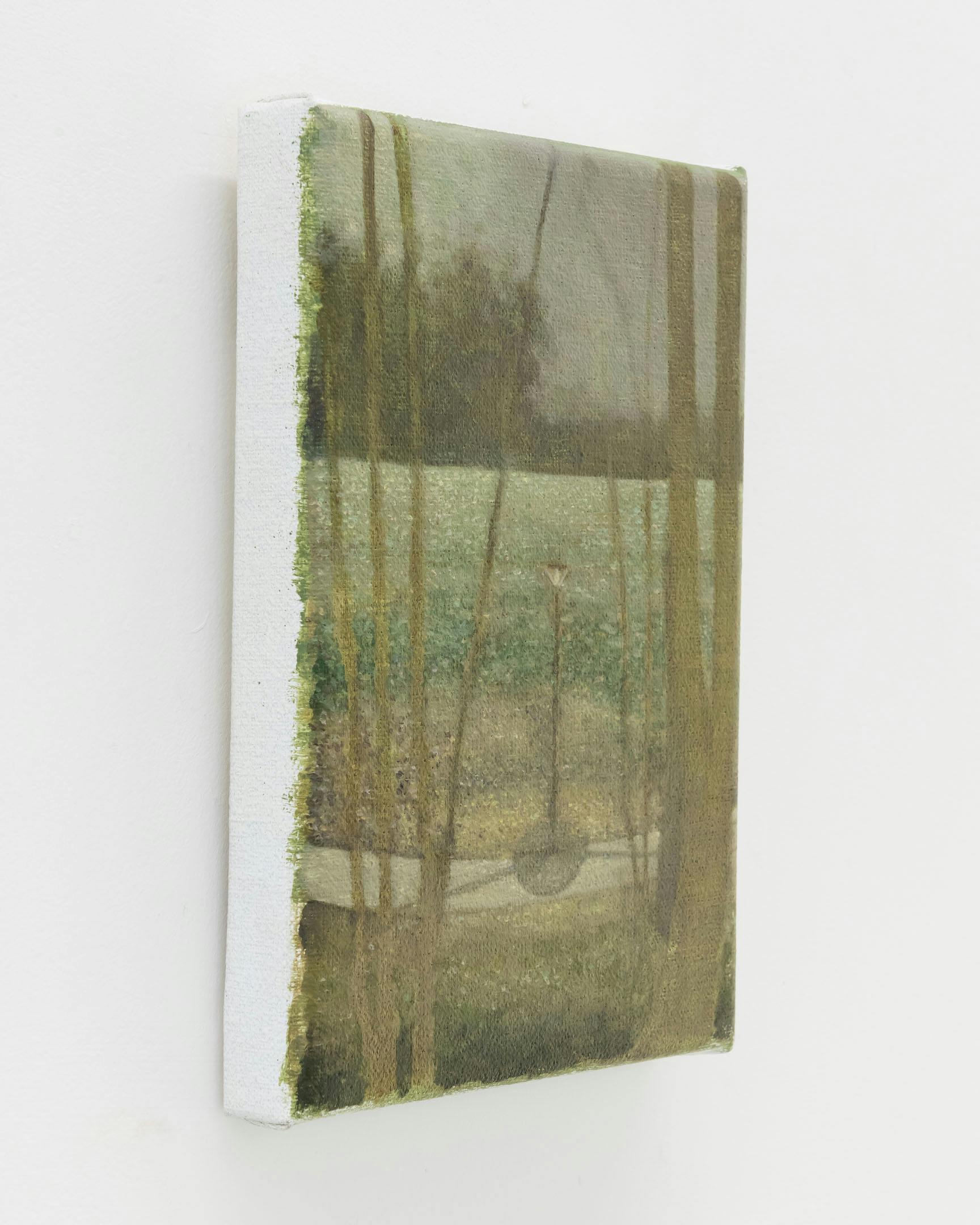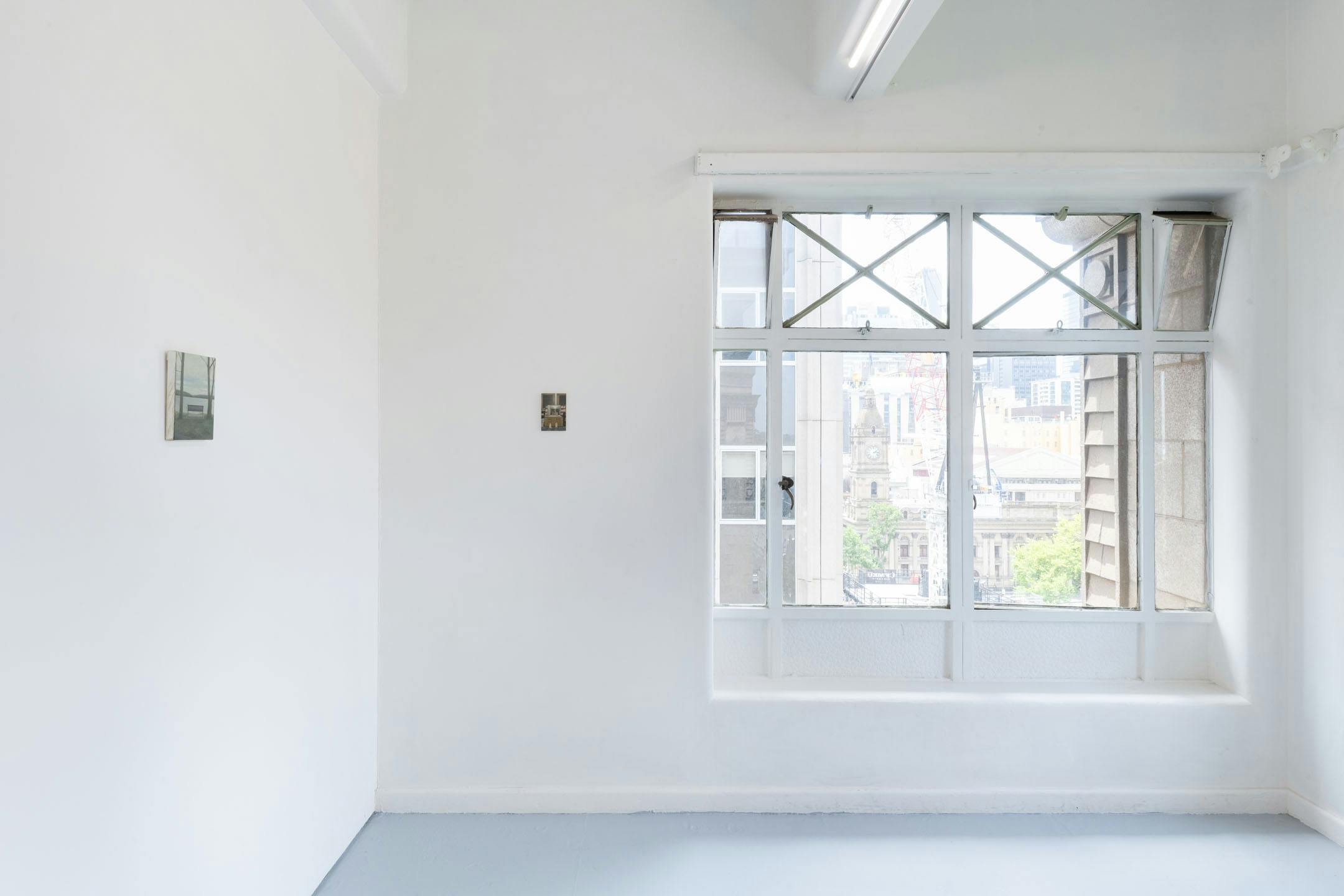
‘A near empty room. A reflection on a wall. A detail dismissed,’ writes Kate Wallace in her notes. Her postcard-sized paintings are infused with this description. They offer glimpses of a bigger picture, yet we're always denied entry. Painter Merlin James, writing about the late , observed that ‘his portals prevent, even as they promise, access’. We witness a similar distancing in Kate’s, each of her portals, like Morris's, encapsulating an empty room or deserted hinterland under muted light.
Drawing from photographs she’s taken in her places of refuge, these surroundings are reminders of the solitude she so desires. French philosopher Gaston Bachelard in ‘Poetics of Space’ describes the home as ‘our corner of the world’. We’re confronted with many of these transitory intersections in Kate’s paintings, as an awkwardly cropped doorway or a faint reflection from a bedroom mirror points towards Bachelard’s notion of the home as ‘chamber of being’. By painting these sanctuaries, she is both memorialising yet also obfuscating her understanding of them, allowing her brushes to blur certain details.
Writer John Berger wrote how photographs create a sense of immediacy because they ‘stop time’, whereas paintings are charged with an ability to ‘encompass time’. Kate’s paintings transcend photography by making way for the painted mark. Similar to the way would achieve reflections with tiny globules of dotted paint, or technique of applying colourful underlayers to leave a dry mottled surface, on a close viewing Kate’s paintings are made up of a minutia of fine details using small brushes. She writes of painting’s ‘innate ability to convey what we can and can’t see’, often returning to paintings by , who throughout her short life mastered an effortless ability for clarity paradoxically using a method which renders the image fuzzy or out of focus. This obscuring is something Kate is always seeking out, in the same way another of her influences freezes a moment in a grey mist.
The rooms Kate depicts are often unadorned, the focus instead on what isn’t there. Belongings are spared definition in favour of soft lines and curves of the surrounding architecture. We know that signs of life lurk beyond her aperture, but ultimately are never given form. She takes inspiration from painters who conceive rooms with the memory of presence rather than occupied by life itself – notably in painting in which a visual clue in the form of a written note suggests an existence beyond the doorway, or in , a goldfish swims in its bowl beneath a side light, a clue that someone is perhaps close by.
Kate suggests that the occasional glimpse of a plant or flower are, in her words, ‘indicative of a desire to preserve something now lost’. With this fascination in how value is remembered, or else extinguished and forgotten, she blossoms while painting.
Kate Wallace (b. 1990, Melbourne, Australia). Selected exhibitions include: Melbourne Now, National Gallery of Victoria, Melbourne (2023) Outdoors, Nowhere, in Nothing, Andrew Edlin Gallery, New York (2023) the curve that warms, Leila Greiche, New York (2023) Making the Invisible Visible, Fiona and Sidney Myer Gallery, Melbourne (2023) Three Hares, Shepparton Art Museum, Shepparton (2023) Memory of Place, LON Gallery, Melbourne (2022) Traces, NARS Foundation, New York (2022) A place once travelled, Mornington Peninsula Regional Gallery, Mornington (2022) Private Eye, Oigåll Projects, Melbourne (2022) Spring 1883, Melbourne (2021) New Landscapes, LON Gallery, Melbourne (2020) Views To Remember, C3 Contemporary Art Space (2019).
References
1
2
3
4
5
6
7
Kate Wallace, Interiors
January 12 – February 10, 2024

